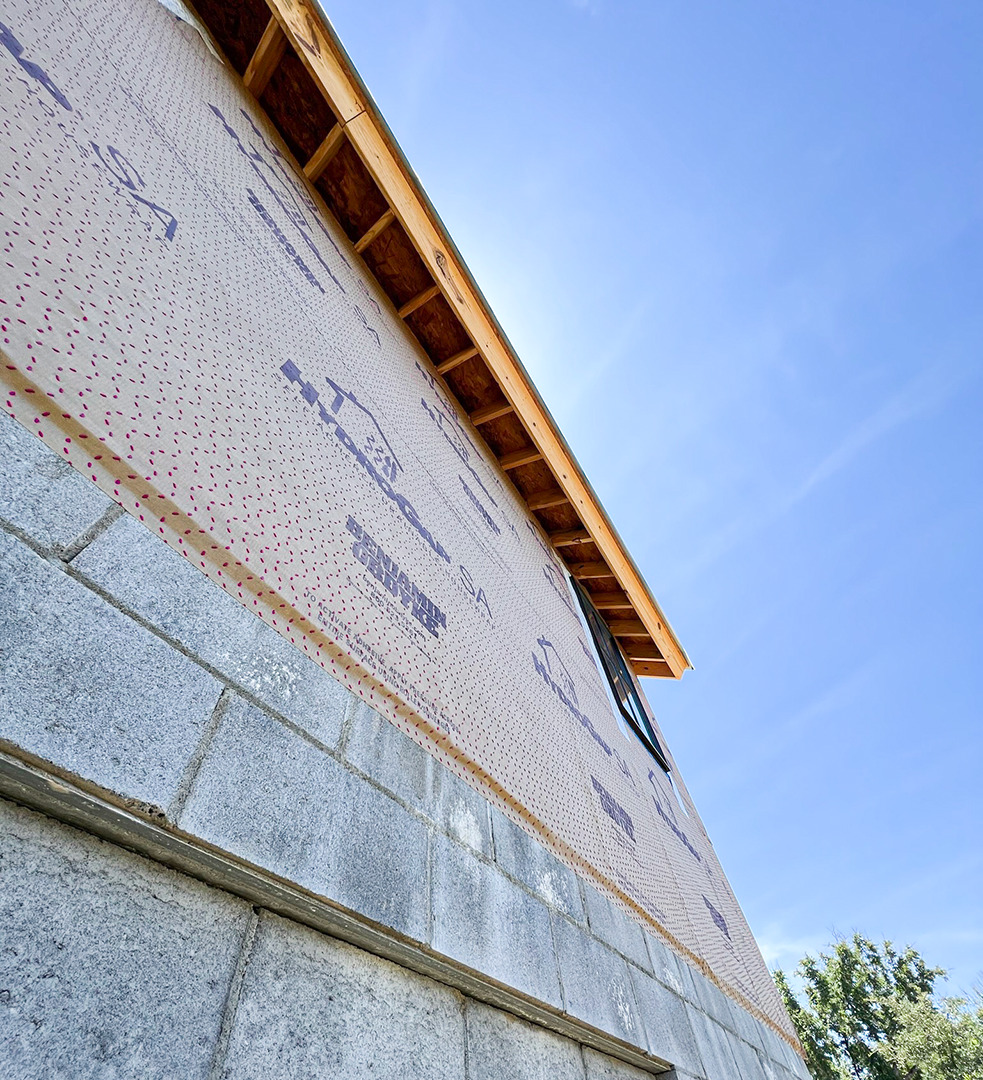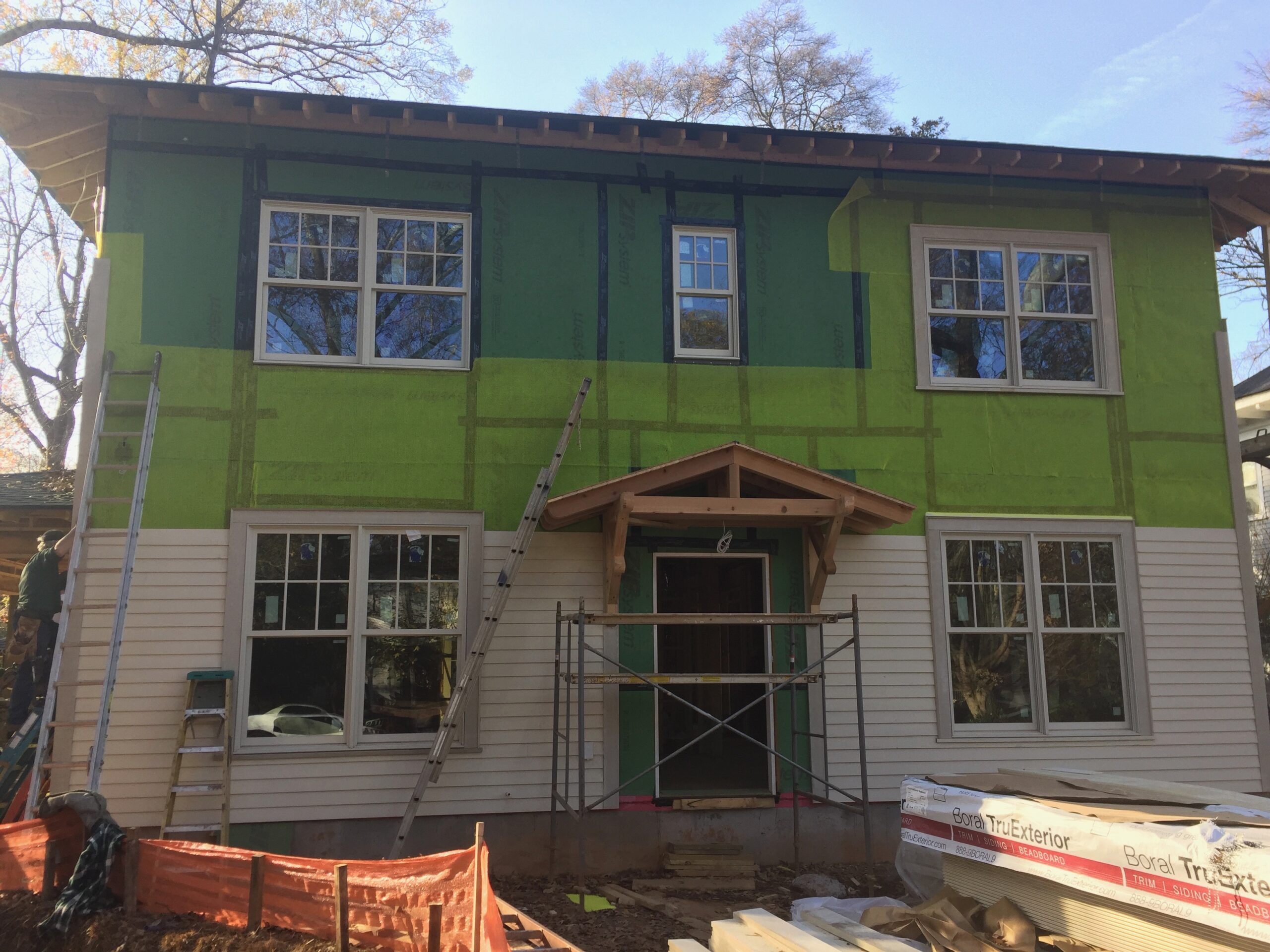Weather-resistant barriers are a necessary component of any wall assembly. Using a housewrap prevents mold, rot, water, and air leaks while increasing a home’s overall efficiency. Housewraps are notoriously the most common moisture-management product used, and because of this, the number of options on the market are aplenty. To ensure the success of your building envelope, it’s important that you’re not settling for just anything available. In this blog, we’ll walk you through the things you should consider in order to find the best housewrap.
The Okay(ish) Housewraps
An “okay-ish” housewrap is one that meets code compliance, but it doesn’t offer much more than that. If the only goal for your build is meeting code, then that’s fine and dandy. But if you’re a professional who takes pride in your work – don’t settle for using a product that barely gets the job done. Nowadays, if you want to achieve building an assembly that will last, it’s vital to build beyond the code (click here for more on that). Listed below are the “okay-ish” housewraps and why we’re classifying them as such.
Felt or Building Paper
In some areas, felt or building paper can be classified as a housewrap, making it the lowest-performing product to be considered a weather-resistant barrier.
While felt and building paper are both asphalt saturated, the difference between the two are: building paper consists of a single layer of mostly virgin cellulose fibers saturated with asphalt and felt paper consists of multiple layers of loosely laid recycled cellulose fibers saturated with asphalt.
Before the 2000’s, there was a higher presence of asphalt in the makeup of the housewraps. However, in the past few decades there has been less asphalt incorporated during the manufacturing of these products, hindering their already subpar performance. As a result, both felt and building paper tear easily, breakdown quickly, and don’t create a proper water or air-control layer.
Woven Plastic
We’re placing woven plastic housewraps into the “okay-ish” category because they are often perforated, meaning they have tiny holes poked in them to allow water vapor to pass through. This also means that liquid water can enter the wall assembly. Additionally, this type of housewrap tends to have good tear strength but provides a lower level of moisture and air control.
Both categories of the above housewraps are your most cost-effective – but at what cost do you compromise performance?
The Housewraps That Will Get the Job Done
Our next category of housewraps is those that will get the job done – they’re definitely better than “okay-ish” but still not all that and a bag of chips.
Non-woven
Non-woven housewraps are manufactured with fibers meshed together to create increased tensile strength. A non-woven housewrap is also microporous, meaning liquid water cannot pass through, but water vapor can, which in turn helps prevent mold and rot. The most common non-woven housewrap on the market is the standard Tyvek HomeWrap, however if you want to BuildBetter with an Obdyke alternative (we highly suggest this), our BenWrap would be the one to choose. Our non-woven housewrap boasts a premium tri-laminate material to provide optimal strength and resists damage from surfactants that can compromise other brands of housewrap.
The Best Housewraps
If you’ve read this far, odds are that you get just as excited as we do about using the best when it comes to building science. Without further ado, *cue the drum roll*, the best housewrap you can use is a drainable one!
Drainable Housewraps
Drainable housewraps, like HydroGap, feature a microporous quality that provides great water holdout in addition to achieving drainage. Our patented HydroGap drainage technology allows liquid water to drain quickly and effectively behind the cladding to prevent catastrophic failures.
More About HydroGap Drainable Housewrap
- The 1 mm compression-resistant spacers assure a continuous and efficient drainage gap
- The tri-laminate substrate provides a water holdout layer that is sandwiched between two non-woven layers to maximize strength and protect it from damage during installation
- With a vapor permeability rating of 16, this product sits right in the sweet spot allowing moisture to escape the wall assembly quickly before it damages the sidewall materials
- Removes over 100X more bulk water from a wall versus standard housewraps
- Drains at least 2X faster than other drainable housewraps
Remember, a mechanically fastened WRB should only account for the water-control layer of your build. If you’re looking for a product that will offer the benefits of both a water-control layer, and an air-control layer – consider using a self-adhered drainable housewrap. Our HydroGap SA combines the water-shedding benefits of a drainable housewrap with the air-sealing benefits of an adhesive.
Benefits of HydroGap SA
- The 100% continuous acrylic adhesive technology provides sealing around every fastener and penetration point
- Our patented 1mm spacers create a true drainage space with 96% drainage efficiency and will remove water at least 2x faster than other drainable housewraps
- A complete line of flashing accessories is available to create the most durable system and achieve unmatched warranty coverage for up to 20 years
- Adheres to OSB, CDX, plywood, and CMU without the use of a primer above 25 degrees Fahrenheit
The ability of your housewrap to drain water increases performance by reducing the overall risk of water buildup in the assembly by breaking the surface tension and getting it down and out.
Moral of the story, why settle with something that is just okay, when you could have the best?




